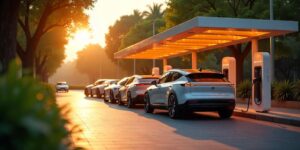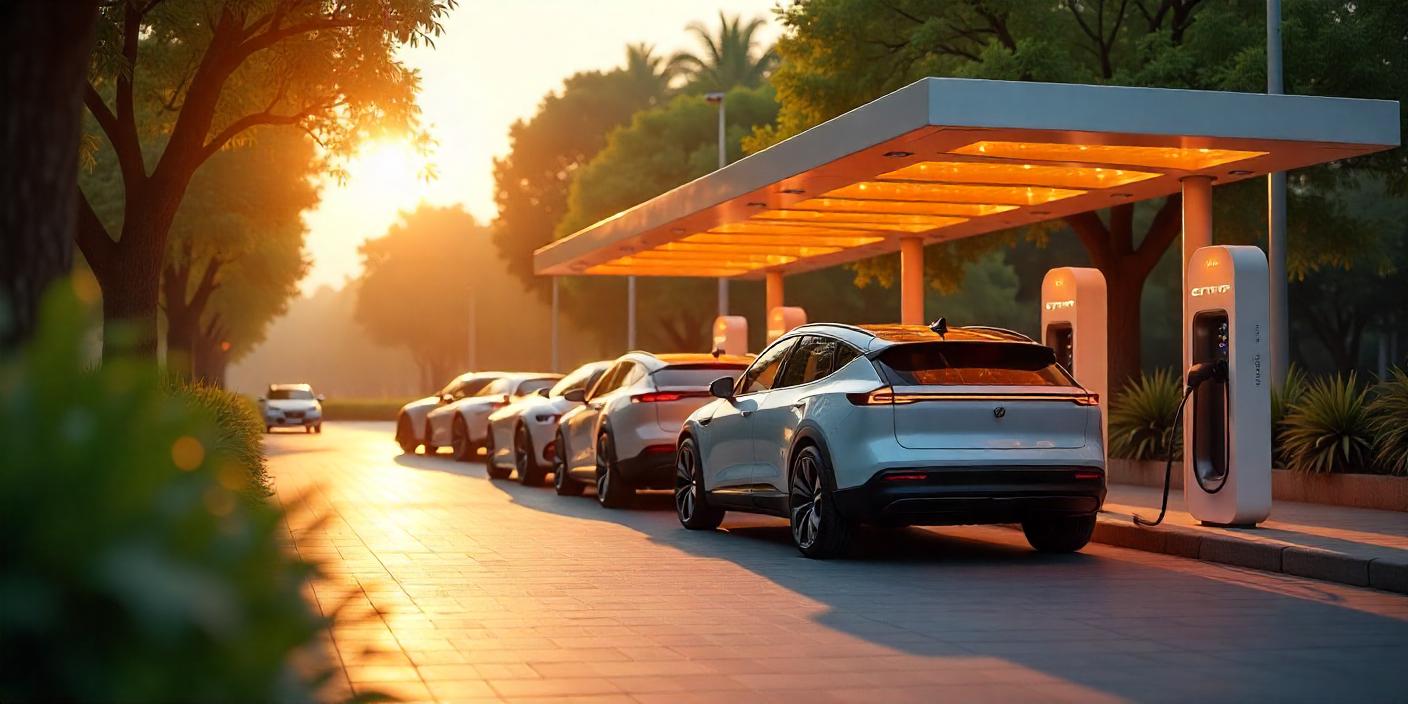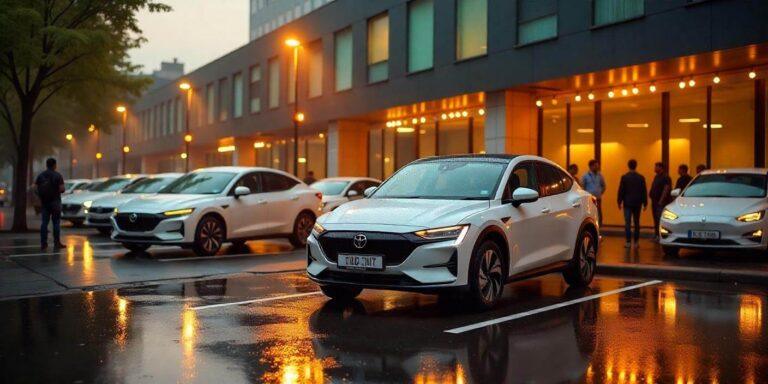Topics Covered ✨
Electric Vehicle (EV) adoption in India is accelerating, driven by government policies, consumer demand, and technological advancements. However, challenges like infrastructure gaps and affordability remain. This article explores the current landscape, emerging trends, and future prospects of EV adoption in India.
Key Trends in EV Adoption
- Rising Sales: EV sales in India grew by 157% YoY in 2024, with over 1.5 million units sold.
- Government Initiatives: Policies like the FAME II scheme, tax incentives, and state subsidies continue to push EV penetration.
- Charging Infrastructure Expansion: The number of public charging stations has doubled in the past year, crossing 10,000 nationwide.
- Battery Technology Advancements: Lithium-ion battery costs have dropped by 80% over the past decade, making EVs more affordable.
- Corporate Adoption: Companies like Ola, Tata, and Mahindra are investing heavily in EV fleets.
- India vs. Global Market: India’s EV penetration is 1.3% of total vehicle sales, compared to China’s 20% and Europe’s 12%, highlighting the growth potential.
EV Market Growth and Global Comparisons
India’s EV sector is still at an early stage compared to global leaders like China, Europe, and the US. As per industry reports:
- China leads the EV market with over 10 million EVs sold in 2024.
- Norway has 85% of new cars as EVs, showcasing an advanced adoption model.
- The US is investing $7.5 billion in EV charging networks, boosting accessibility.
Government Policies Driving EV Growth
The Indian government has introduced several initiatives to promote EV adoption:
- FAME II Scheme: Offers subsidies up to ₹15,000/kWh for EV buyers.
- PLI Scheme: ₹18,000 crore investment to boost EV manufacturing.
- State EV Policies: Delhi, Maharashtra, and Karnataka offer additional tax rebates.
Challenges Hindering EV Adoption
1. Infrastructure & Charging Network
India currently has a 4:1 EV-to-charging station ratio, far from global standards. Rural areas have limited access to charging points.
2. Affordability & Financing
High initial costs deter middle-class buyers despite long-term savings. Limited financing options and higher interest rates on EV loans are additional hurdles.
3. Battery Supply & Sustainability
Dependence on imported lithium and cobalt raises cost concerns. Battery recycling infrastructure is still in its early stages.
4. Consumer Awareness & Trust
Misconceptions about battery life, charging time, and resale value persist. Range anxiety remains a major hurdle, despite improving battery performance.
EV vs. ICE: Cost & Savings Comparison
| Feature | EV | ICE (Petrol/Diesel) |
|---|---|---|
| Running Cost (₹/km) | 1.2 | 8-10 |
| Maintenance Cost | Low | High |
| Government Subsidy | Yes | No |
| Resale Value (Expected) | Improving | Established |
| Charging/Refueling Time | 30 mins – 8 hrs | 5 mins |
Frequently Asked Questions (FAQs)
1. How long do EV batteries last?
Most EV batteries last 8-10 years or 1.5 lakh km, with some models exceeding this.
2. Are EVs cheaper to maintain than petrol/diesel cars?
Yes, EVs have fewer moving parts, leading to 40-60% lower maintenance costs.
3. What is the resale value of an EV?
While EV resale value was uncertain initially, demand is rising, and models like Tata Nexon EV retain up to 70% value after 3 years.
4. How long does it take to charge an EV?
Fast chargers take 30-60 minutes, while home charging can take 6-8 hours.
5. What incentives are available for EV buyers?
Under FAME II & state policies, buyers can get subsidies up to ₹1.5 lakh.
Conclusion
India’s EV sector is at a pivotal moment, with rapid adoption expected in the coming years. While challenges persist, strategic policies, investment in infrastructure, and consumer education will drive mass adoption. By 2030, India aims to have 30% of its vehicles electric, shaping a sustainable mobility future.
What’s your take on EV adoption in India? Share your thoughts in the comments!










